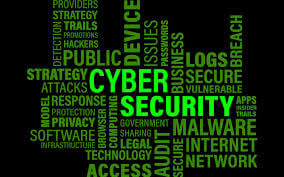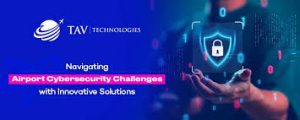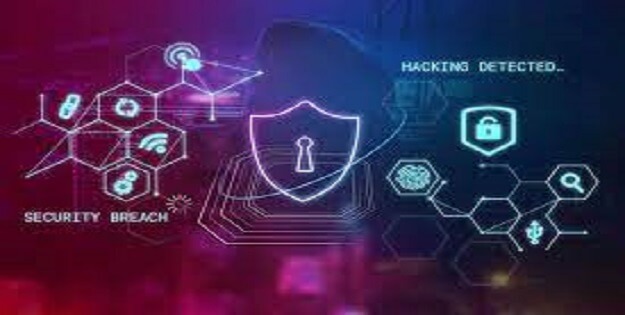you need to know Cybersecurity Challenges and Solutions are a critical concern in today’s digital world, as the rapid advancement of technology has led to an increase in cyber threats and attacks. To address these challenges, organizations and individuals need to implement robust cybersecurity solutions. Here are some of the key cybersecurity challenges and corresponding solutions:

Cybersecurity Challenges and Solutions you need to know
Challenges:
1: Advanced Persistent Threats (APTs): APTs are sophisticated and stealthy attacks that often target specific organizations or individuals over an extended period.
Solution: Implement a multi-layered defense strategy that includes network monitoring, intrusion detection systems, and advanced threat intelligence to detect and mitigate APTs.
2: Ransomware Attacks: Ransomware attacks involve encrypting an organization’s data and demanding a ransom for decryption.
Solution: Regularly back up data, maintain offline backups, and educate employees on recognizing phishing attempts. To prevent and detect ransomware infections, use robust endpoint security solutions
3: Phishing Attacks: Phishing attacks use deceptive emails or websites to trick users into revealing sensitive information.
Solution: Train employees to recognize phishing attempts, use email filtering software, and employ strong authentication methods such as multi-factor authentication (MFA) to prevent unauthorized access.
4: Insider Threats: Malicious or negligent employees can pose a significant cybersecurity risk.
Solution: Implement strict access controls, conduct regular security awareness training, and monitor user activity for unusual behavior.
5 . IoT and BYOD Security: The proliferation of Internet of Things (IoT) devices and Bring Your Own Device (BYOD) policies can introduce vulnerabilities.
Solution: Segment IoT devices from critical networks, enforce strong security policies for BYOD, and regularly update and patch IoT devices.
6: Zero-Day Vulnerabilities: Cybercriminals often exploit unknown vulnerabilities before they are patched.
Solution: Employ vulnerability management programs that include regular scanning and patching. Additionally, invest in threat intelligence to stay informed about emerging threats.
7: Cloud Security: Storing data and running applications in the cloud introduces new security challenges.
Solution: Implement strong access controls, encryption, and audit trails. Regularly assess and monitor cloud infrastructure for vulnerabilities and threats.
8: Supply Chain Attacks: Cybercriminals target the supply chain to compromise organizations indirectly.
Solution: Vet third-party vendors, maintain supply chain security standards, and conduct security audits of suppliers and partners.
- Compliance and Regulations: Meeting regulatory requirements like GDPR, HIPAA, or CCPA can be challenging.
Solution: Develop a compliance framework, conduct regular audits, and invest in compliance management software to ensure adherence to regulations.
10 . Human Error: Often, cybersecurity breaches result from simple human mistakes.
Solution: Invest in user education and training, create a security-conscious culture, and implement security policies and procedures to minimize human error.
11 . AI and Machine Learning Attacks: As AI and machine learning become more prevalent, attackers may use them for more sophisticated attacks.
Solution: Employ AI and machine learning for cybersecurity to detect and respond to threats in real-time. Continuously adapt and evolve security measures to combat AI-driven attacks.
12 . Data Privacy: Protecting user data is crucial due to privacy regulations and customer expectations.
Solution: Data encryption, data masking, and data access controls are the solutions to this problem.
In summary, cybersecurity challenges continue to evolve as technology advances. Solutions involve a combination of technology, processes, and education to protect against various threats. Organizations must adopt a proactive approach to cybersecurity to mitigate risks and adapt to new challenges in the ever-changing cyber threat landscape.

Cybersecurity Challenges and Solutions you need to know
Why is Cybersecurity Important?
Cybersecurity is important for several reasons:
- Protection of Confidential Information: Cybersecurity helps protect sensitive information such as personal data, financial records, intellectual property, and trade secrets from unauthorized access or theft. This is crucial for individuals and organizations to maintain their privacy and safeguard valuable assets.
- Prevention of Financial Loss: Cyber attacks can result in significant financial losses for individuals and businesses. By implementing robust cybersecurity measures, organizations can minimize the risk of financial fraud, ransomware attacks, and data breaches that can lead to costly legal battles, fines, and reputational damage.
- Preservation of Reputation: An organization’s reputation can be severely damaged by a successful cyber attack. Consumers and clients trust businesses that prioritize cybersecurity and protect their data. Failure to do so can result in a loss of customer confidence and a decline in business opportunities.
- Ensuring Business Continuity: Cybersecurity measures help organizations maintain uninterrupted business operations. By protecting critical systems from cyber threats, organizations can avoid system disruptions, downtime, and loss of productivity, ensuring continuity even in the face of potential cyber incidents.
- Protection Against Intellectual Property Theft: Intellectual property is a valuable asset for many businesses. Implementing strong cybersecurity measures helps protect patents, copyrights, trademarks, and trade secrets from cyber espionage and theft, preserving a company’s competitive advantage.
- Critical Infrastructure Protection: Cybersecurity is essential for protecting critical infrastructure, such as power grids, transportation systems, and communication networks. An attack on these systems can have severe consequences on public safety, the economy, and national security. Robust cybersecurity measures are crucial to safeguarding these vital components of society.
- Compliance with Regulations: Many industries have specific regulations and compliance requirements related to cybersecurity. Adhering to these regulations ensures that businesses operate within legal frameworks and meet industry standards, avoiding penalties and legal consequences.
In summary, cybersecurity is important to protect confidential information, prevent financial losses, maintain a good reputation, ensure business continuity, preserve intellectual property, safeguard critical infrastructure, and comply with regulations. By prioritizing cybersecurity, individuals and organizations can mitigate risks and protect themselves from the ever-evolving landscape of cyber threats

Major Challenges in Cybersecurity Solutions
Cybersecurity solutions face several major challenges due to the evolving nature of cyber threats and the complexity of the digital landscape. These challenges require ongoing efforts and innovative strategies to ensure effective cybersecurity. Some of the major challenges in cybersecurity solutions include:
1: Cybersecurity Skills Gap: There is a shortage of skilled cybersecurity professionals who can develop, implement, and manage effective security solutions. Organizations struggle to find and retain qualified personnel.
Solution: Invest in training and education programs to develop in-house talent. Consider outsourcing some cybersecurity functions to specialized firms.
2:Sophisticated Threats: Cybercriminals continually develop more advanced and sophisticated attack techniques, making it challenging to defend against them.
Solution: Adopt advanced threat detection and response tools that leverage artificial intelligence and machine learning to identify and mitigate threats in real-time.
3: Rapid Technological Advancements: As technology evolves, new vulnerabilities emerge, and existing security solutions may become obsolete quickly.
Solution: Implement a proactive approach to cybersecurity by staying updated on emerging technologies and threats. Regularly assess and update security measures.
4: Information Overload: Security teams are inundated with vast amounts of data from various sources, making it difficult to identify genuine threats among the noise.
Solution: Implement security information and event management (SIEM) systems and automation tools to streamline data analysis and response.
5: Supply Chain Vulnerabilities: Cyberattacks targeting the supply chain can have far-reaching consequences, as seen in recent high-profile incidents.
Solution: Strengthen supply chain security by assessing and monitoring third-party vendors, conducting security audits, and implementing strong access controls.
6: Regulatory Compliance: Complying with an increasingly complex web of data protection and privacy regulations is a significant challenge for organizations.
Solution: Invest in compliance management software, conduct regular audits, and establish clear policies and procedures to ensure compliance.
7: Resource Constraints: Many organizations, especially smaller ones, face budget constraints that limit their ability to invest in robust cybersecurity solutions.
Solution: Prioritize cybersecurity investments based on risk assessment. Leverage open-source and cost-effective security tools where possible.
8:User Awareness: Human error remains a significant contributor to cybersecurity breaches, and educating employees about security best practices can be challenging.
Solution: Develop a comprehensive security awareness training program and foster a culture of security within the organization.
9:Emerging Technologies: The adoption of emerging technologies such as IoT, AI, and edge computing introduces new security challenges that may not have well-established solutions.
Solution: Conduct thorough risk assessments before implementing emerging technologies, and invest in security solutions designed for these environments.
10: Global Nature of Threats: Cyber threats can originate from anywhere in the world, making it difficult to track and respond to attackers effectively.
Solution: Collaborate with global cybersecurity organizations and law enforcement agencies to share threat intelligence and coordinate responses.
11:Privacy Concerns: Balancing cybersecurity with individual privacy rights is an ongoing challenge, especially with increasing scrutiny of data collection and use.
Solution: Implement privacy-by-design principles in technology and adhere to privacy regulations to protect both cybersecurity and privacy interests.
12. Zero-Trust Security: Transitioning to a zero-trust security model, which assumes no trust, can be complex and requires rethinking traditional security architectures.
Solution: Gradually implement zero-trust principles, starting with micro-segmentation and strong access controls, while gradually reducing trust assumptions.
Addressing these major challenges in cybersecurity solutions requires a holistic and adaptable approach, involving technology, personnel, policies, and continuous monitoring and improvement. Collaboration and information sharing within the cybersecurity community are also vital for staying ahead of evolving threats

Cybersecurity Challenges and Solutions you need to know
Common Cybersecurity Solutions
Common cybersecurity solutions and practices are essential for protecting computer systems, networks, and data from various cyber threats. Here are some of the most common cybersecurity solutions and practices:
1. Firewalls: Firewalls are a fundamental component of network security. They monitor incoming and outgoing network traffic and can either allow or block data based on pre-established security rules.
2. Antivirus Software: Antivirus software is designed to detect and remove malicious software, such as viruses, malware, and spyware, from computers and devices.
3. Intrusion Detection Systems (IDS) and Intrusion Prevention Systems (IPS): IDS and IPS are used to detect and prevent unauthorized access or malicious activities on a network.IPS actively blocks or mitigates threats, while IDS identifies potential threats.
4. Encryption: Data encryption ensures that sensitive information is secure by transforming it into unreadable code. Common encryption methods include SSL/TLS for web traffic and encryption of data at rest.
5. Multi-Factor Authentication (MFA): MFA adds an extra layer of security by requiring users to provide multiple forms of authentication before granting access. This often includes something the user knows (password), something they have (smartphone or token), and something they are (biometrics).
6. Regular Software Updates and Patch Management: Keeping operating systems and software up-to-date is crucial to fix known vulnerabilities and reduce the risk of exploitation.
7 . Access Control and User Privileges: Limiting access to sensitive data and systems based on user roles and responsibilities helps prevent unauthorized access and data breaches.
8. Security Awareness Training: Educating employees and users about cybersecurity best practices can help prevent social engineering attacks, such as phishing.
9. Network Segmentation: Dividing a network into smaller, isolated segments helps contain security breaches and limit lateral movement by attackers.
10. Security Information and Event Management (SIEM): SIEM systems collect and analyze data from various sources to detect and respond to security incidents and threats in real-time.
11 . Backup and Disaster Recovery: Regularly backing up data and having a well-defined disaster recovery plan in place can help organizations recover from data breaches or other cyber incidents.
12. Endpoint Security: Endpoint security solutions protect individual devices (endpoints) from various threats, including malware and unauthorized access.
13. Web Application Firewalls (WAF): WAFs are designed to protect web applications from a variety of attacks, such as SQL injection and cross-site scripting (XSS).
14. Security Auditing and Penetration Testing: Regular security audits and penetration testing help identify vulnerabilities and weaknesses in an organization’s systems and processes.
15. Security Policies and Procedures: Developing and enforcing cybersecurity policies and procedures is crucial for creating a security-conscious culture within an organization.
16. Incident Response Plan: Having a well-documented incident response plan ensures that the organization can effectively respond to and recover from cybersecurity incidents.
17. Vendor Security Assessment: Assessing the cybersecurity practices of third-party vendors and partners is important to ensure that their products or services do not introduce vulnerabilities.
18 . Cloud Security Solutions: For organizations using cloud services, cloud-specific security solutions and practices are essential to protect data and resources in the cloud environment.
19. Mobile Device Management (MDM): MDM solutions help organizations secure and manage mobile devices, ensuring that they meet security standards and policies.
20. AI and Machine Learning-Based Threat Detection: Leveraging AI and machine learning algorithms can enhance threat detection and response capabilities by identifying patterns and anomalies in large datasets.

These are some of the common cybersecurity solutions and practices that organizations can implement to protect against a wide range of cyber threats. Cybersecurity is an ongoing process, and it requires continuous monitoring and adaptation to address evolving threats and vulnerabilities
